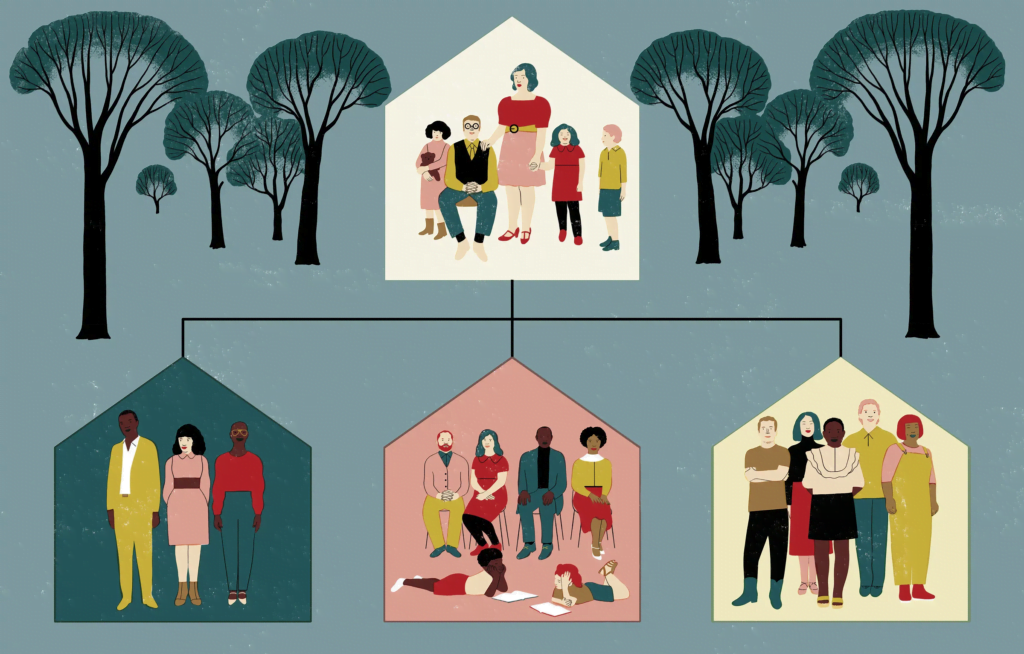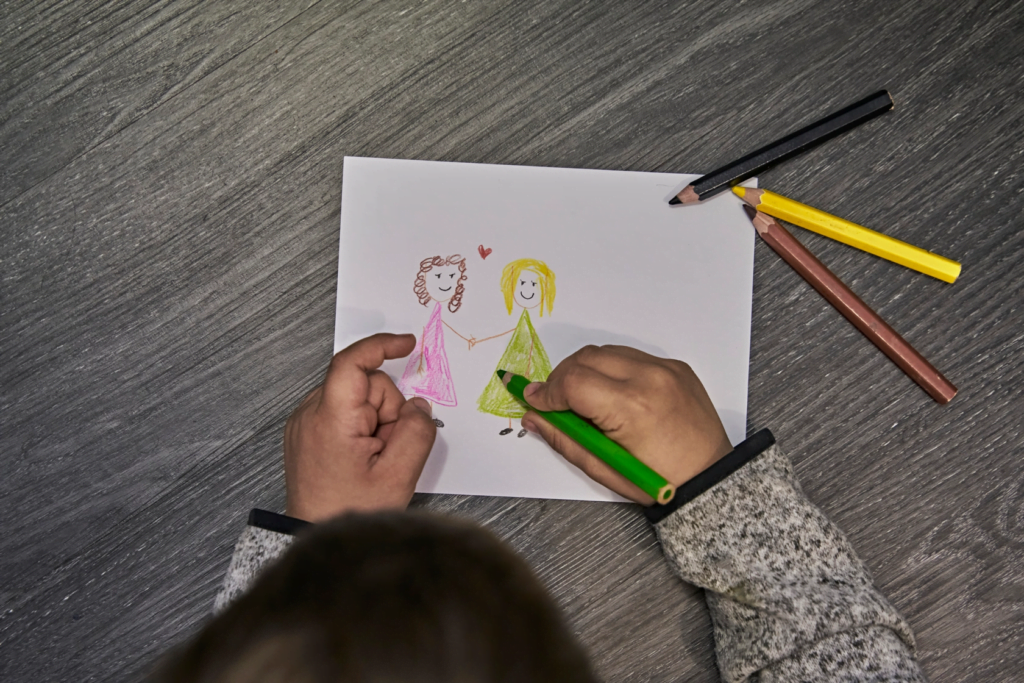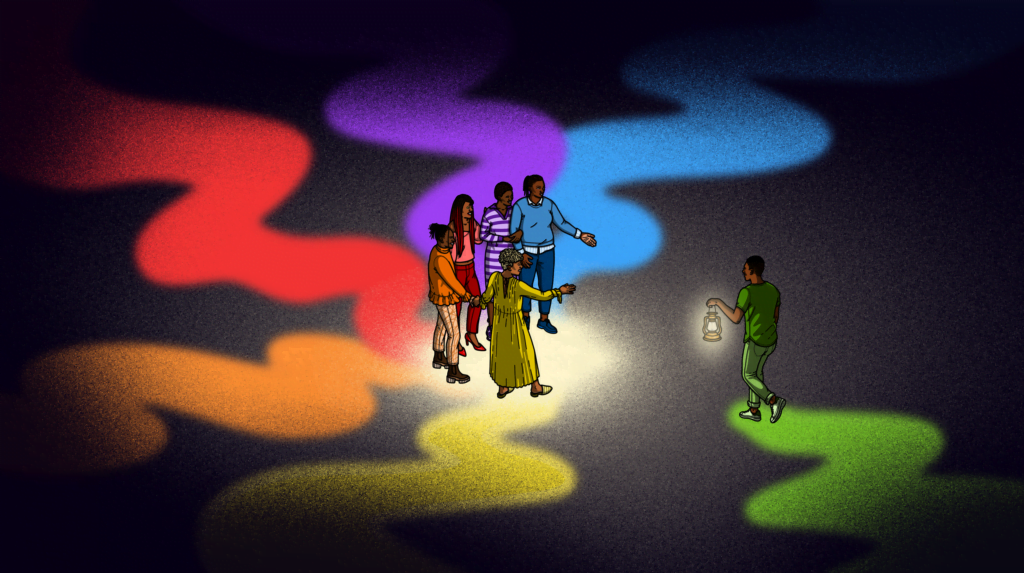In a recent Supreme court order, the court mentioned that domestic, unmarried and queer relationships also fall under the idea of a “family” and are entitled to the protection of the law. This remarkable order acknowledges and validates the non-traditional forms of families that have always existed in our society and warrant legal recognition for the same.
A woman whose spouse had two children when she married him was denied maternity leave when her biological child was born. She was denied leave because the Central Civil Services (Leave) Rules, 1972, limits maternity leave to government servants with ‘less than two surviving children’ only. When the case went to the Supreme court (Deepika Singh vs Central Administrative Tribunal), the court took a purposive interpretation, i.e., an interpretation of the law that will uphold the purpose and spirit of the law, and maintained that maternity leave could not be denied.
In the order, the court highlighted that family is not a static unit of a father and a mother, which does not change. Along with this, the court also observed that familial relationships might exist in other forms beyond the atypical norms of gender and sexuality.

The predominant notion of family has been a man with one (or more) woman and their children, all biologically related to the same man and the woman. Yet, many different forms of families exist. Couples without children, couples estranged from their children, couples or single parents with adopted children, single individuals and individuals with their chosen non-biological families are all realities of the past and the present.
Queer relationships are also a part of our society where people with same-sex or gender identities may want to live together in a relationship and possibly also want to raise a child. However, these would often be considered outliers and away from the dominant heterosexual, patriarchal norms.
How often do we see heterosexual families that are dysfunctional where love and care are missing? Such dysfunctional families invariably impact a child’s mental health, which is often lifelong. What lies at the family’s heart is not necessarily gender-specific roles but love, care, appreciation, and a sense of security
This lack of openness is evident in how our laws and societal attitudes fail to recognise queer relationships regarding housing, banking, marriage, adoption, and access to reproductive technologies, amongst others. A cis-heteronormative underpinning runs all along.
For example, both marriage and inheritance are governed by personal laws of religious communities, and these laws do not consider gender beyond male and female or union anything other than heterosexual bonds. Likewise, the Assisted Reproductive Technology (Regulation) Act, 2021 and the Surrogacy Regulation Act, 2021nwhich may provide avenues to parenthood without sexual intercourse, are also available only to married couples, thus by default excluding the LGBTQIA+ population and single individuals.
Discriminatory societal attitudes accompany the legal side of affairs. Just ask a gay couple moving into a city about their difficulties in acquiring a house to live in. Do these prevalent norms reflect the voices and aspirations of the queer communities?
Also read: ‘It Is The Subtle Acts That Make Relationships Hold’: On Love & Coexistence In Families

A study on family formation goals among LGBTQIA+ youth in urban India found that participants exercise their agency, and forming a family can reflect a significant milestone in the lives of individuals. But is this milestone possible to achieve?
Perhaps, we should focus more on these values instead of insisting on heterosexual relationships and biological parenthood. Not all families will look alike, but it is the love, care and a sense of belonging that is common in all happy and cohesive family units. Realising these values will invariably expand our definitions of the family and end the stigma associated with all kinds of non-traditional families
Sometime ago, the first author interacted with a closeted queer person studying medicine in a south Indian state. He must have been in his early twenties. When asked about parental aspirations, he immediately responded that he has always wanted to adopt a baby girl.
However, this will not be possible as our adoption law does not allow a single man to adopt a baby girl. He will not be able to adopt even with a partner of the same sex as a same-sex union has no legal recognition in India. Both his single identity and his queer identity restrict his parental aspirations, thereby depriving a citizen of his right to become a parent.
How often do we see heterosexual families that are dysfunctional where love and care are missing? Such dysfunctional families invariably impact a child’s mental health, which is often lifelong. What lies at the family’s heart is not necessarily gender-specific roles but love, care, appreciation, and a sense of security.

These values are independent of the sexuality or civil status of the parent(s). Perhaps, we should focus more on these values instead of insisting on heterosexual relationships and biological parenthood. Not all families will look alike, but it is the love, care and a sense of belonging that is common in all happy and cohesive family units. Realising these values will invariably expand our definitions of the family and end the stigma associated with all kinds of non-traditional families.
This upholds the human rights of both our fellow citizens and their upcoming generations. Article 16 of the Universal Declaration of Human Rights says that Men and women of full age, without any limitation due to race, nationality or religion, have the right to marry and to found a family. While everyone might not conform or identify as a ‘man’ or a ‘woman’, rights must be common for all humans, and they must be extended to everyone irrespective of gender and sexuality. A family must be built on love and care, not based on our restricted notions of gender and sexuality.
Also read: Dysfunctionality In Families: A Personal Account Of Identifying Patterns And Coping
Salik Ansari is a Research Ethics Master’s graduate working with Sangath, a non-profit organisation. M.Sivakami is a Professor at the School of Health Systems Studies, TISS, Mumbai.





Marriage is the union between a man and a woman. But with women-centric laws it is always husbands at the receiving end. Just see how the sweet wife and mother duo change colours like chameleons if things go awry after marriage and use the law to commit daylight robbery by forcibly taking huge sums of money with threats of a false case, filing false cases leaving a man depressed, humiliated, jobless, facing social boycott, and legal theft known as alimony. It is not surprising that men’s suicide rate is so high in India.